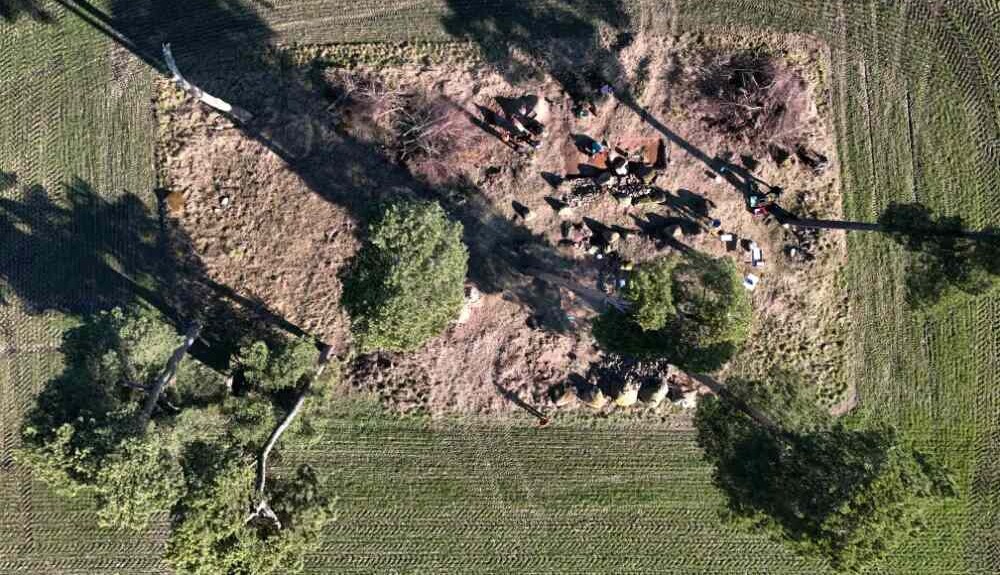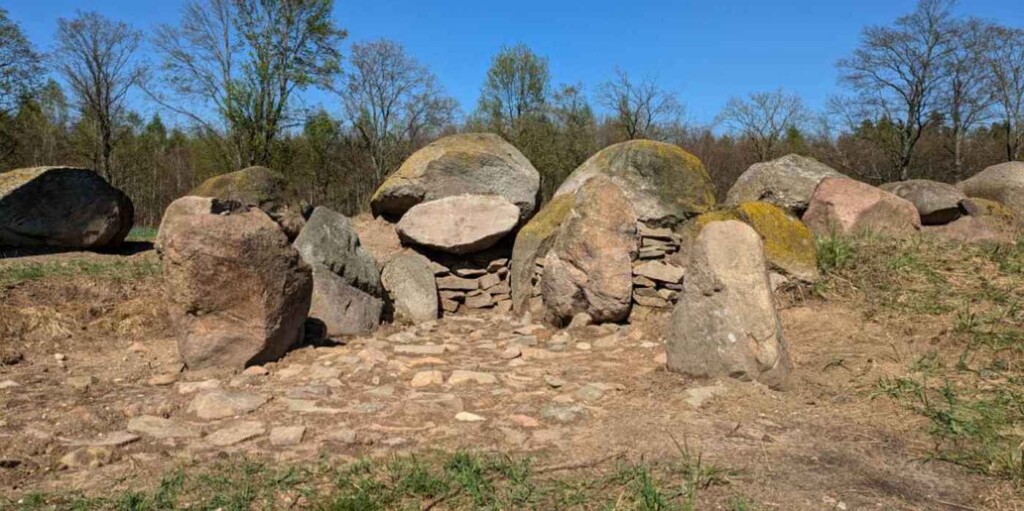 An aerial view of the reconstructed Küsterberg site – credit, Saxony-Anhalt State Office for Monument Preservation and Archaeology Barbara Fritsch
An aerial view of the reconstructed Küsterberg site – credit, Saxony-Anhalt State Office for Monument Preservation and Archaeology Barbara FritschPeople find time to volunteer for all manner of projects, and in Germany, a community recently got together to pitch in for the sake of their local, 5,500-year history.
The Neolithic burial site of Küsterberg is located in the German state of Saxony-Anhalt’s Haldensleben forest, and dates back to the time of Stonehenge. It was first excavated between 2010 and 2013, during which archaeologists made a detailed map of the site’s original layout.
Based on archaeological finds, the excavation team was able to determine a first-use date of around 3,600 BCE. During the transition from the Bronze to the Iron age, around 1,000-600 BCE, however, some of the 19 large “orthostats” or standing stones were disturbed, leading to the structure’s partial dismantling.
Thousands of years passed and modern developments and land use further degraded the site, until a project was dreamed up by the Saxony-Anhalt State Office of Monument Preservation and Archaeology to rebuild the original structure to mark the European Day of Megalithic Culture, an annual holiday on the last Sunday of April.
With the help of locals from the town armed with an excavator, archaeologists directed the reassembly of the orthostats and the 13 tons worth of granite capstones which enclosed the burial bit.
16 megaliths ringed the burial chamber, spaced 6.5 feet apart. These were also returned, as were the shards of stone called graywicke which covered the burial chamber floor and the space between the megaliths.
The ensemble was ringed by an earthen mound, which archaeologists suspect was built with dirt taken from a nearby hill. Additional archaeological work in the forests of Haldensleben has identified ten settlements from the time, which may explain the monumentality of Küsterberg.
ALSO CHECK OUT: Discovery of Immense Fortifications Dating Back 4,000 Years Enclose Khaybar Oasis in Northwest Arabia
Küsterberg is aligned on an east to west line, consistent with many Neolithic sites around Europe to correspond to the rising and setting sun.
 The reconstructed entry area of the “Küsterberg” megalithic tomb – credit, Saxony-Anhalt State Office for Monument Preservation and Archaeology Barbara Fritsch
The reconstructed entry area of the “Küsterberg” megalithic tomb – credit, Saxony-Anhalt State Office for Monument Preservation and Archaeology Barbara FritschThe reconstructed Küsterberg megalithic tomb is intended to inspire visitors with enthusiasm for the region and its long history.
MORE MONUMENTAL EUROPE: Much Like Stonehenge, Solstice Sunlight Would Have Danced on the Walls of This Neolithic Spanish Tomb
It will be added as an attraction to both the 24-mile long “4 million years of human history” circular route around Haldensleben, and the 48-miles long Aller-Elbe cycle path.
Additionally, the site has been added to a very cool travel idea known as the The European Route of Megalithic Culture, a network of linked sites and museums from Denmark, England, Germany, The Netherlands, Portugal, Spain and Sweden that highlight Europe’s incredible legacy of ancient stone-moving.
MOVE This Heavy Story Over To Your Friends’ Social Media…
Source link

